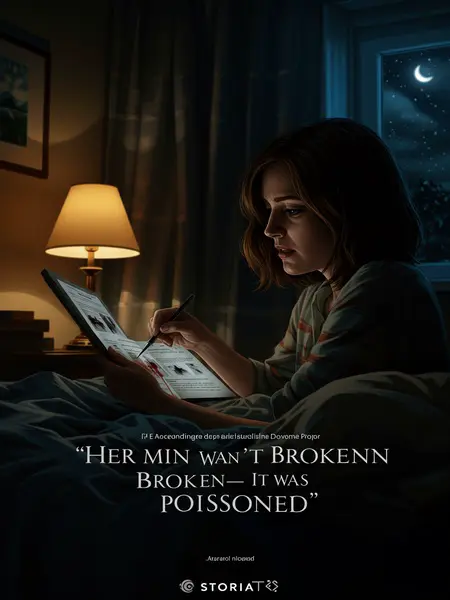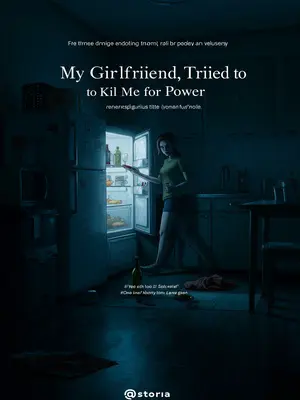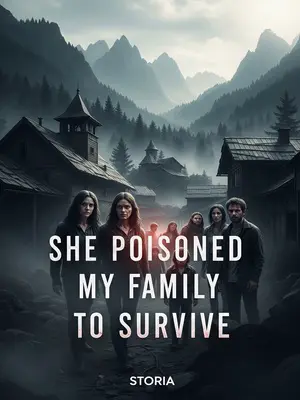Chapter 2: A Closer Look
I called several nurses over, and together we brought the patient into the trauma bay, hooked her up to cardiac monitoring, put on a blood pressure cuff, measured her blood pressure— The beeping machines and the bustle of nurses brought a sense of routine to the chaos. We tried to create a little bubble of safety in the clinical glare of the trauma bay.
After all these procedures, the patient was surprisingly docile and quiet, not making a fuss, which I hadn't expected. She followed instructions without protest, gaze fixed on the ceiling tiles.
I had thought she would turn the ER upside down, and had already asked the nurses to prepare sedatives like lorazepam and haloperidol, ready to administer them intravenously if needed for rapid sedation. The meds sat ready on the tray, just in case, but for now, she was calm.
Her husband said her condition had suddenly worsened that night and she was very manic at home, but calmed down after arriving at the hospital. Sometimes, the ER’s routine and bustle have a strangely calming effect—maybe it was the sense of structure, maybe just exhaustion.
After reading the medical records, hearing about all the previous symptoms, and seeing the cranial imaging her family brought, the diagnosis of schizophrenia seemed solid. Everything pointed to it, but something nagged at the back of my mind.
But I was still a bit uneasy. I couldn't put my finger on it, but I just felt her condition might not be so simple. A gut feeling, maybe—something they never teach you in med school, but you pick up from years of seeing people at their worst.
Of course, even just schizophrenia was enough of a headache, but I felt she might be even more complicated—maybe it was intuition. Or maybe not intuition, but vigilance. I’d learned not to trust first impressions—not when lives are at stake.
If an ER doctor doesn't have a bit of instinctive caution, they'd have burned out a thousand times by now. In this job, second-guessing is a survival skill.
Schizophrenia itself isn't fatal, but if it's schizophrenia caused by other organ problems, it could become life-threatening at any moment. My mind raced through the possibilities, thinking of cases I'd heard about in residency.
For example, hepatic encephalopathy, uremic encephalopathy, and so on. I’d seen these masquerade as psychiatric problems before, and knew the danger of missing the underlying cause.
I explained these concerns to her husband. He listened intently, nodding, desperate for any answer that made sense.
In any case, the first step was to get her into the trauma bay and hooked up to cardiac monitoring. You don’t take chances in the ER—every minute counts.
Then I asked the resident to call a neurologist for a consult. We should have called a psychiatrist, but there were none on duty at night, so neurology was the closest option—getting another opinion never hurts. I wanted fresh eyes on the case, someone to challenge my assumptions.
Her blood pressure came back: 210/100 mmHg! The nurse read it out, and we all exchanged worried looks. That was sky-high, dangerous territory.
Oh no, such high blood pressure—let's hope there's no brain bleed. I flashed back to every hypertensive crisis I’d managed—some ended well, some didn’t.
That was another of my worries. High blood pressure can be a silent killer, and in her case, the stakes felt even higher.
The patient had no previous history of hypertension, but such high blood pressure was definitely abnormal. Her husband shook his head when I asked—"Never, not even at the doctor’s for a checkup."
If the patient was very agitated, this sky-high blood pressure could be explained by tension and anxiety. Sometimes, people with acute psychosis will spike their blood pressure, but this seemed a little too high for just nerves.
But now the patient was relatively calm, so such high blood pressure was very abnormal. It didn't fit. I jotted a note in the margin of her chart, underlining it twice.
Moreover, the patient looked overweight, with a round face—clearly the type prone to high blood pressure, high cholesterol, and high blood sugar, so I had to be extra careful. Her chart mentioned a BMI in the obese range, which raised red flags for me.
I was especially worried she might have a stroke, so I checked her limb muscle strength and tone. There was nothing major, but her muscle strength was a bit weak—when I asked her to shake hands, her grip was poor. Her handshake was limp, fingers barely curling around mine.
Maybe she was just hungry; her husband told me she hadn't eaten much lately. That was possible, but I wasn’t convinced.
I grunted, not giving a definite answer. I’ve learned to keep my doubts close, especially when families are already overwhelmed.
Of course the family wouldn't know, but my mind was racing, considering all possibilities. Medicine is part science, part detective work, and tonight felt like a whodunit with lives on the line.
Many diseases can cause psychiatric symptoms. In our ER, the most common are uremic encephalopathy, hepatic encephalopathy, and pulmonary encephalopathy. We needed to draw blood quickly—just do liver function, kidney function, blood gas analysis, and everything would become clear. I rattled off the orders to the resident, who scribbled furiously on his clipboard.
Also, a cranial CT was necessary, because her condition had worsened, her blood pressure was so high, and her limb strength was a bit poor. If the CT was normal, I would feel more at ease. It was time to cover all the bases.
I told her husband: although it was done before, this is a different time, so it's better to repeat it for peace of mind. He didn’t hesitate—“Whatever you think is best, Doc.”
Her husband didn't hesitate at all, saying he would follow my advice. That kind of trust? It’s a lifesaver in the ER. No arguing, just action.
Soon, the nurse measured the patient's temperature and found she had a moderate fever. 101.4 on the digital thermometer. That sent me down another mental path.
That was odd—fever usually means infection, but where? I started thinking through the usual suspects.
The most common is respiratory infection, so I listened to her lungs first. The room was quiet except for the faint hiss of the oxygen, and the click of my stethoscope against her skin.
There seemed to be some crackles in the left lung. As we discussed before, crackles mean there is fluid seeping into the airways, and the sound is produced when air breaks through the bubbles. It’s a sound ER doctors know all too well—like Velcro being slowly pulled apart.
I observed the patient's breathing—it was a bit rapid. Her chest rose and fell faster than normal, and she winced slightly with each breath.
Has the patient been coughing or producing sputum lately? I asked her husband. He looked puzzled, replaying the past days in his mind.
No, he denied it, saying he had been with her all this time and hadn't seen her cough or produce sputum. Just poor appetite, not eating much. He sounded apologetic, as if he should have noticed more.
Still, I couldn't rule out a lung infection or pneumonia. Pneumonia can cause fever, crackles, rapid breathing, and even trigger or worsen psychiatric symptoms. I explained this to him. Sometimes, infection is the root cause of all the chaos.
Actually, I'm not very experienced with psychiatric illnesses, but by reasoning, I believe that if a patient has an acute infection like pneumonia, it can definitely aggravate existing conditions like schizophrenia. Infections can tip a fragile mind into crisis.
Let's do both cranial and chest CTs, I suggested. The more information, the better.
Okay. The family agreed readily. Their relief was visible—finally, something concrete to do.
Before the CT, I had already instructed the nurse to draw blood for routine tests, then we pushed the patient to the CT room. The corridor was chilly, the squeak of the gurney wheels echoing against the linoleum.
On the way, we kept sedatives ready, in case the patient acted up or was uncooperative—just give her an injection, I told the nurse. I didn’t want any drama in the radiology suite.
The CT went smoothly. The radiology tech nodded to me as we finished, “All good, Doc.”
The images could be viewed immediately. The head was fine—no bleeding, no tumor. That was a relief, but didn’t solve the puzzle.
But there was a problem in the lungs—some inflammation in the left lung, which could explain the fever, crackles, and rapid breathing. It looked like a classic case of lower lobe pneumonia.
The patient had pneumonia, I told the family. Their faces fell, but I reassured them—“We caught it early, and it’s treatable.”
But it wasn't serious. A course of antibiotics would likely clear it up.
Unexpectedly, as soon as the patient returned to the trauma bay, she suddenly had a seizure, which startled me. Her entire body went rigid, eyes rolling back, and for a split second, everyone froze. The crash cart was already in motion before anyone shouted. Her husband’s knuckles went white on the rail, eyes wide with terror.
She suddenly clenched her teeth, her hands convulsed, her face showed terror, as if she had seen something horrifying. The room filled with the panic of sudden crisis—nurses darted forward, husband shouted her name.
In the middle of the night, if this had happened at home, it would have scared her family out of their wits. Even here, in the clinical safety of the ER, it set hearts pounding.
I quickly calmed down. Just as I was about to instruct the nurse to medicate and stop the seizure, the patient stopped on her own—it lasted less than five seconds. We all stood frozen for a beat, then breathed out.
It really came and went quickly, starting and ending abruptly. I watched her chest rise and fall, waiting for the next crisis.
After this seizure, the patient was even weaker. Her hands barely moved, her eyes fluttered closed.
Lying on the trauma bed, her breathing was visibly labored, gasping for air. I checked her pulse, murmuring encouragement, even though I knew she couldn’t really hear me.
Fortunately, her vital signs were still stable, and I breathed a little easier. The crisis, for the moment, had passed.
The neurologist came, looked at the head images, did a simple neurological exam, and thought it wasn't a brain bleed or stroke, but said it was still worth doing a cranial MRI. He spoke in low tones, outlining the plan to her husband.
Because MRI and CT are different—MRI can see things CT can't, like acute cerebral infarction or small tumor lesions. Sometimes, the most dangerous problems are the ones you can’t see at first glance.
But she had a cranial MRI not long ago and nothing was found, her family interjected. Her husband sounded desperate, as if clinging to hope that this would all turn out to be a mistake.
The neurologist hesitated, then said: the condition can change—having no problem before doesn't mean there's none now. He explained gently, not wanting to alarm them but needing to be thorough.
Exactly, just as I told the family, this is a different time. Medicine is about never assuming you’ve solved the puzzle.
For safety, it's better to do an MRI to rule out stroke or other neurological problems. I stressed this point—the cost of missing something could be too high.
Since there was no neurological specialty issue for now, the patient would stay in the ER for observation, and psychiatry would be consulted the next day. Her husband nodded, though he looked no less worried.
At this time, the resident came to report that the patient's blood test results were out—nothing much, except that potassium was extremely low, only 1.8 mmol/L (normal range: 3.5–5.5). The number made my heart skip a beat.
This was within my expectations—1.8 is extremely severe hypokalemia. I’d suspected as much when I saw her weakness, but the confirmation still shocked me.
What's the cause? I asked the resident. He flipped through his notes, brow furrowed.
Probably because the patient had poor appetite and ate little, the resident answered, very by-the-book. He recited this almost automatically, as if reading from a manual.
That was the most obvious reason for now. After all, the family said she hadn't eaten much lately. It fit, but I wasn’t ready to stop digging.
The resident's analysis was correct, at least for now. We prescribed potassium chloride for the patient. I wrote the order with a sense of urgency, knowing time was not on our side.
We had to quickly bring her potassium up to a safe level—1.8 mmol/L is dangerously low, she could easily go into cardiac arrest. I explained this to the husband, watching the panic rise in his eyes.
Your heart runs on electricity, and without enough potassium, the wires start to spark out. I made sure the resident heard this too—some mistakes you only make once, if you’re lucky.
Severe hypokalemia can cause cardiac arrest. Just a few months ago, there was a news story about a patient who died the night after surgery—autopsy showed severe hypokalemia. Sometimes, the difference between life and death is measured in millimoles.
I told the resident about the dangers of hypokalemia—these are the kinds of mistakes you only make once—if you’re lucky.
Also, the patient's seizure might be related to hypokalemia—quickly correct the potassium. The connection was clear, and I repeated it for the resident’s benefit.
Since admission, the patient hadn't had an EKG—must do one, I told the resident. With such low potassium, checking the EKG is essential; the resident could also learn the EKG features of hypokalemia. There’s no better teacher than a real case.
The resident was excited and went off to wheel over the EKG machine. I watched him go, remembering my own eagerness in those early years.
When connecting the EKG electrodes, you need to roll up the patient's pant leg. When the resident did this, it caught my attention. Something was off.
After rolling up the pant leg, the resident frowned, seemed about to say something, but held back, then glanced at me. He looked uncertain, as if unsure whether what he was seeing was important.
I was also watching from the side and saw everything. My mind clicked into high gear, ready for the next twist.
But when I saw what was on her leg, every instinct screamed—something here wasn’t adding up. “Check this out,” I said, my pulse suddenly pounding.













